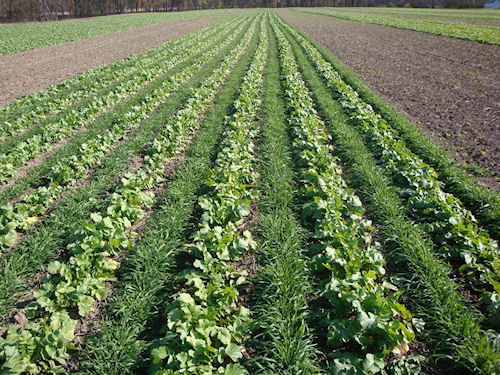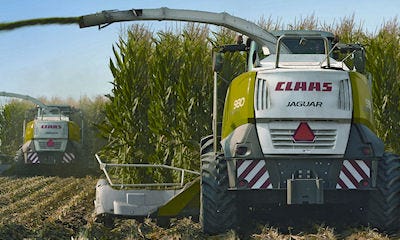April 10, 2013

The planting of cover crops has been on the rise across the Midwest. And while the practice started out in Missouri as one to increase forage production in pastures, it is now gaining some ground in row crop fields.
Farmers are finding that adding cover crops to their rotations is helping with erosion control, compaction, nutrient leaching, water infiltration and improving overall soil biodiversity. Some are also finding these new crops to help with weed control and disease suppression.
However, incorporating this new farming practice brings about its own set of questions. Are there specific cover crops that offer certain benefits? What cover crops work best after different grain crops? What is a typical cover crop rotation? Researchers at the Ohio State University looked at these common questions and offered up a few suggestions.
 What's In Your Cover Crop Mix?
What's In Your Cover Crop Mix?
Below is a list of cover crops that provide specific attributes when grown after cash crops:
For organic matter: Sorghum Sudan grass, cereal rye, annual ryegrass, triticale, oats, wheat, spelt and barley.
For nitrogen: cowpea, winter pea, red clover, sweet clover, hairy vetch, alfalfa, soybeans and mung beans.
Require no herbicide to kill: oats, cowpea, winter pea, crotalaria, oilseed or tillage radishes, and turnips.
Reduce compaction: Sorghum Sudan grass, annual ryegrass, oilseed or tillage radish, sweet clover-deep taproot, cereal rye and oats.
Start up or enhance no-till: oilseed or tillage radish, turnips, Sorghum Sudan grass.
 Researchers help farmers find right cover crop for the farm.
Researchers help farmers find right cover crop for the farm.
Tolerate heat and drought: cowpea, hairy vetch, mung beans, sweet clover, Sorghum Sudan grass, buckwheat, barley, teff.
Thinking About A Cover Crop? Start With Developing A Plan
Taking time to design your cover crop plan will increase the successful establishment of the crop and potentially allow for improved staggering of fall harvest.
Covers for grain
Researchers also identified which cover crops worked best after grain crops.
After wheat: Cowpea, winter pea or crotalaria are ideal summer cover crops to be winter killed to maintain the nitrogen for the succeeding grain crop. After wheat harvest, oilseed or tillage radish or annual rye grass will help recapture excess nutrients and reduce compaction.
After early soybeans: Cereal rye, annual ryegrass, wheat or oats will help build soil organic matter and reduce compaction. Planting Brassicas (radishes) will also promote weed suppression.
Late soybeans and corn: Cereal rye can be planted after late maturing soybeans and corn and will still provide some stand before winter. It is winter hardy and builds organic matter.
After corn silage: Cereal rye, annual ryegrass, oats, winter pea, oilseed or tillage radish and turnips are all choices.
Plan for rotation
Adding a cover crop to an existing crop rotation may take some planning. Researchers gave the offered the following examples:
For corn/soybean rotation: corn-cereal rye-soybeans-Austrian winter peas.
For corn/soybean/wheat rotation: corn-cereal rye-soybeans-wheat-cowpea (winter pear or hairy vetch)
For corn/corn/soybean rotation: corn-cereal rye-corn-cereal rye-soybeans-Austrian winter peas.
For soybean/soybean rotation: soybean-cereal rye-soybean OR soybean-cereal rye-soybean-wheat-Brassicas.
No matter what benefits farmers are looking at from cover crops they must know what fits in well with their area and rotation. Local county extension agronomists can provide additional advice on planting cover crops.
To find a Missouri extension agronomist log on to their site and locate "Agronomy specialist" under the drop down menu of "Find a specialist near you."
Plant Cover Crops In A Drought Year? You Bet
Cover crops can help conserve moisture, keep soil covered and provide residue going into the cropping season. Download our free report Cover Crops: Best Management Practices.
You May Also Like




